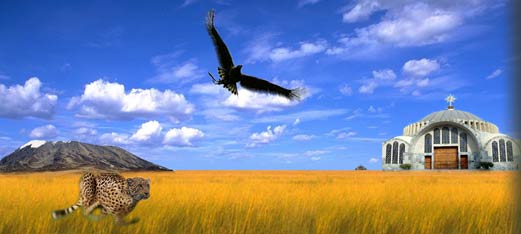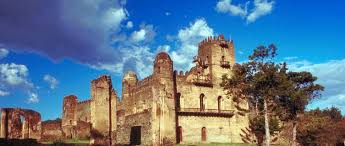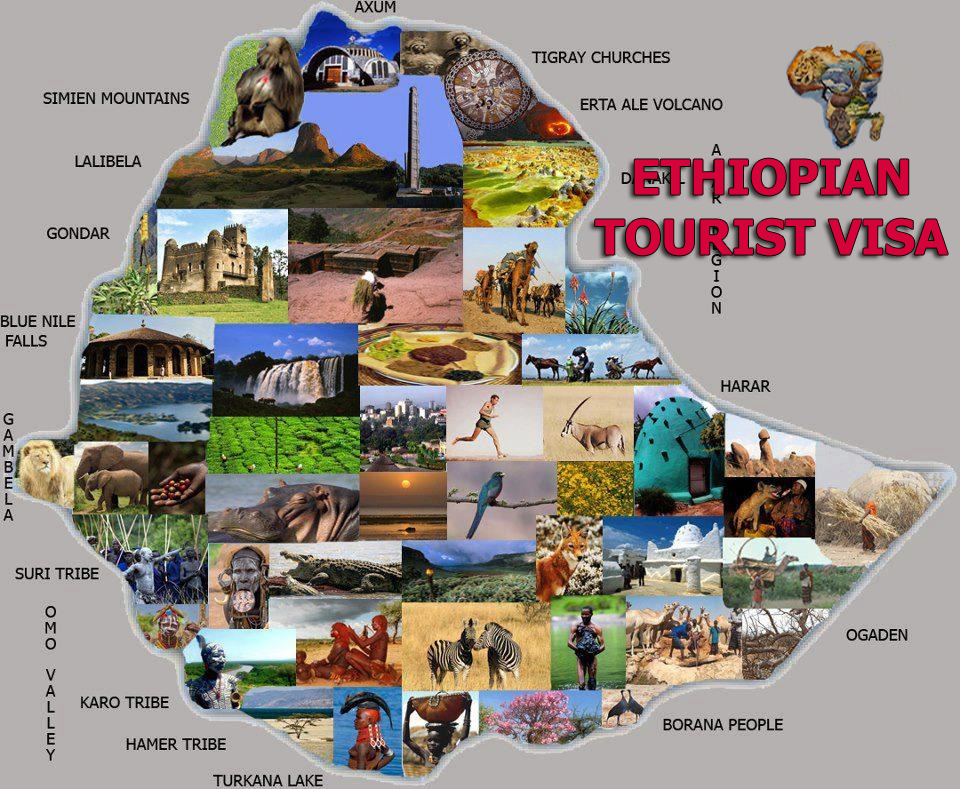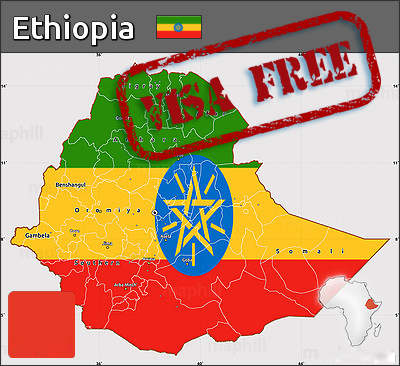The Federal Democratic Republic of Ethiopia is located in the north-eastern part of Africa commonly known as the Horn of Africa. It is strategically proximate to the Middle East and Europe, together with its easy access to the major ports of the region, enhances its international trade. It is bordered by the Sudan in the west, Somalia and Djibouti in the east, Eritrea in the north and Kenya in the south. The country covers 1,112,000 square kilometres (472,000 sq. miles) making it roughly as large as France and Spain combined and is five times the size of the UK.
From the north and running down the centre are the Abyssinian highlands. To the west of the chain the land drops to the grasslands of Sudan, to the east to the deserts of the Afar. South of Addis Ababa, the land is dominated by the Rift Valley Lakes.
Ethiopia’s central plateau varies in height between 2,000 and 3,000 metres. In the north and centre of the country there are some 25 mountains whose peaks rise over 4,000 metres (13,200ft), the highest being Ras Dashen at 4,543 metres (14,538ft).

CLIMATE
There are two seasons in Ethiopia: in most of the country the dry season prevails from October until May with short rains in March; the wet season runs from June until the end of September. In the Omo and Mago parks however, in Southern Ethiopia, the seasons are different with the main rains from March to June, and shorter rains in November.
Although Ethiopia lies within 15 degrees north of the equator, owing to the moderating influence of high altitude, the central highlands, where most Ethiopian people live, generally enjoy a temperate and pleasant climate. In the highlands above 2,000 metres the temperature rarely exceeds 25°C in most of the country. In the lower lying areas (Awash, Omo and Mago parks), which experience sub-tropical and tropical climates, it can get considerably hotter. The temperature generally drops quite rapidly towards sunset.
LANGUAGE
Ethiopia is a land of enormous diversity and as a result Ethiopia has more than 80 languages and over 200 dialects. Amharic or Amharigna is the official language of Ethiopia although the government encourages local languages to be taught in schools. The working languages of the national/regional governments may differ according to regions. Other main languages include Oromigna and Tigrigna. English, French, Italian and Arabic are also widely spoken.
CULTURE
The culture of Ethiopia is diverse and generally structured along ethnolinguistic lines. The country’s Afro-Asiatic-speaking majority adhere to an amalgamation of traditions that were developed independently and through interaction with neighbouring and far away civilizations, including other parts of Northeast Africa, the Arabian Peninsula, India and Italy. By contrast, the nation’s Nilotic communities and other ethnolinguistic minorities tend to practice customs more closely linked with South Sudan and/or the African Great Lakes region.
TOURISM

Riven by many deep and stupendous gorges, crowned by high and magnificent mountains neck-laced by a chain of lakes, water by majestic rivers, studded with burning deserts and great escarpments that plunge down from its highlands, Ethiopia remains a land of incomparable beauty.
But it is not simply the sheer scale of its physical beauty which characterises this land where the Blue Nile has carved one of the world’s greatest and most awesome gorges.
Its ancient and medieval monuments, its proud and colourful cultures, and its varied and often unique wildlife set it apart from all else.
Ethiopia, dissected through its middle by the scar of the Great Rift Valley, is as old as time itself. It is a land claiming a history that goes back to the Old Testament.
It is the land of Sheba, and of Axum and Lalibela, of towering obelisks and the Ark of The Covenant – a land that was Christian before much of Europe and yet unknown to Europe for 1,000 years or more; a land that dwelt in limbo, forgotten by the world which it never forgot.
From the vast spread of Lake Tana, source of the Blue Nile River in the northern highlands, through the relics of Axum, seat of Sheba’s legendary empire, down along the scorching inferno of the Danakil Depression, one of the world’s lowest points, and high amid the wonders of the Simien and Bale Mountains to the untouched, game-filled wildernesses of the remote southern grasslands.







